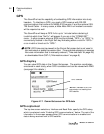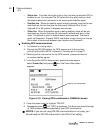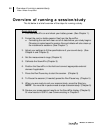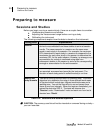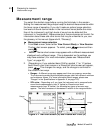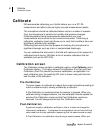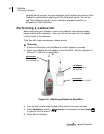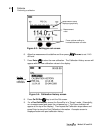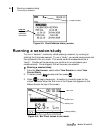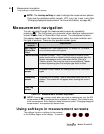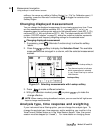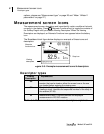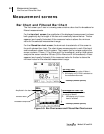
61 Calibrate
Calibration screen
Models SE and DL
Calibrate
3M recommends calibrating your Verifier before you run a STI-PA
measurement and after to ensure highly accurate measurement results.
The microphone should be calibrated before use for a number of reasons.
First, the microphone is sensitive to humidity and pressure changes.
Calibrating before taking measurements assures that your level
measurements are accurate for the current environment. Performing a
calibration verification (post-cal) allows you to verify that conditions have not
significantly affected your readings.
Calibrating also serves the dual purpose of checking the microphone for
significant damage, such as a torn or contaminated diaphragm.
You can calibrate the instrument in the field with reference to the output of a
calibrated sound source. 3M offers a line of acoustic calibrators that are
available (such as the QC10/20).
Calibration screen
The Calibration screen contains a calibration option, called Calibrate, and a
Calibration History. The history shows Pre-Calibration (Pre-Cal) and Post-
Calibration (Post-Cal) results for previous calibrations, as applicable. For
each calibration type, the resulting SPL level is shown along with the time
and the date of the calibration.
Pre-Calibration
The main reason to calibrate is to adjust the current microphone reading to
match a reference input, usually provided by a calibrator.
A Pre-Calibration is conducted when the session is stopped. When you
calibrate during a stopped session, the new calibration results replace the
previous Pre-Calibration results and the Post-Calibration results are
removed. You will always see the last Pre- Calibration results.
Post-Calibration
A post-cal is really a calibration verification; that is, it does not change the
instrument’s calibration. It compares the microphone's current level with the
value read from the last calibration (assuming that the same source is used).
A Post-Calibration is a calibration done during a session pause. When you




